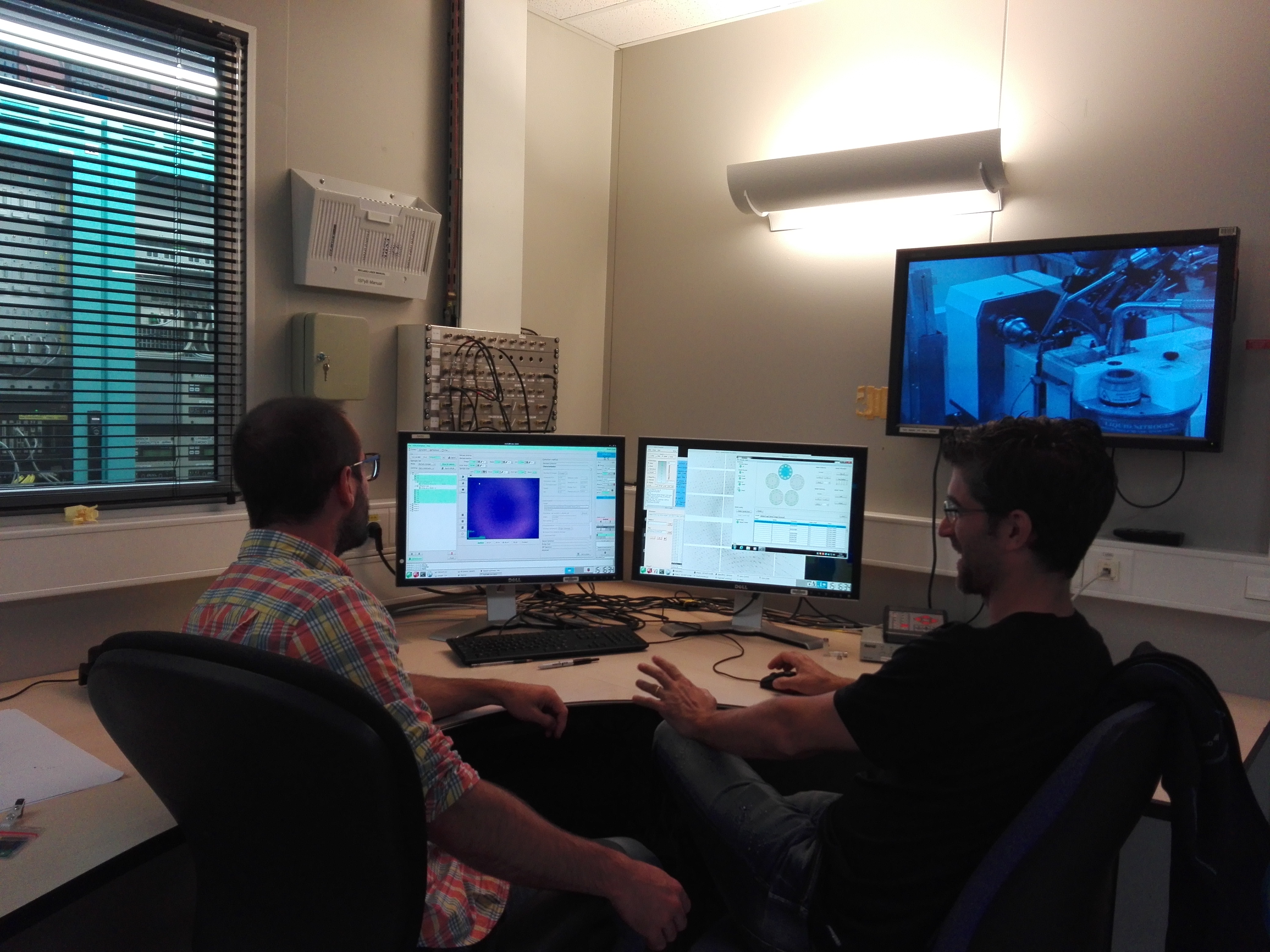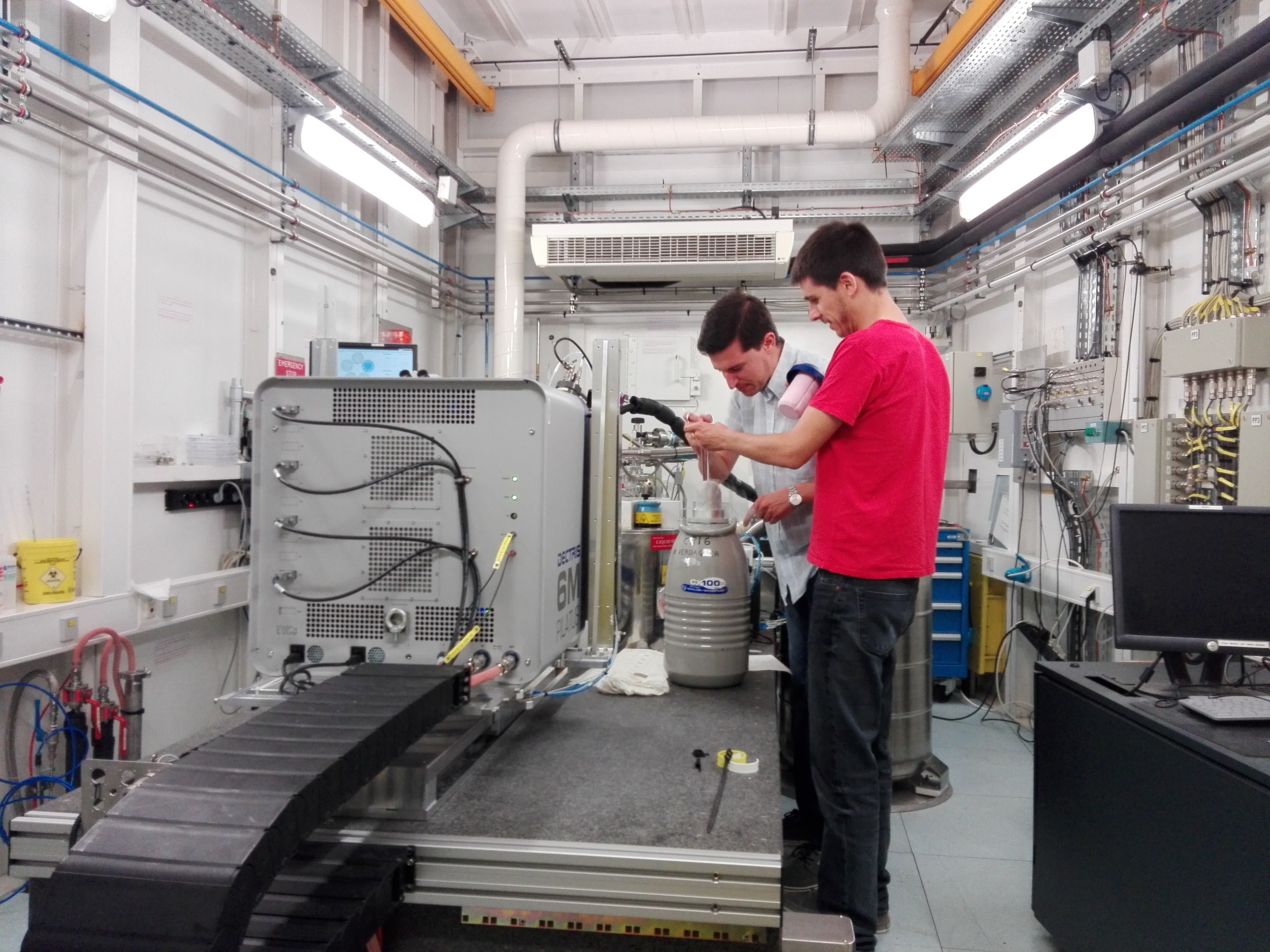- Home
- News
- General News
- #weekendusers Express...
#weekendusers Express experiments for better health
19-09-2016
Synchrotron sources are crucial for structural biology and research performed at the ESRF produces 40% of the protein structures submitted in Europe. This weekend, scientists from Barcelona (Spain) spent 24 hours trying to unveil the structures of medically-relevant proteins.
They drove more than 1000km for 24h of experiments and 130 samples. The aim: to get insight into the structures of proteins that play a role in health, such as mycoplasma, viral and membrane transport proteins. “It is very intense”, explains David Aparicio, from the Institut de Biologia Molecular de Barcelona (Spain), “but we are now coming once a month for 24h each time, so we are used to this rhythm”, he adds. He is one of the four scientists on ID23-1 this weekend. Two of them, Victor Ruiz and Diego Ferrero, also come from the IBMB, but from a different lab than David, whilst the last one, Ekaitz Errasti, works in the Institute for Research in Biomedicine (IRB) in the same city.
 |
|
Checking that the experiment is going smoothly in the small hours of Sunday. |
The researchers came to the ESRF in the framework of the so-called Block Allocation Group from Barcelona. Crystallographers from large, well-established groups requiring a significant amount of beamtime often present their proposals in groups. BAG Barcelona includes groups that belong to the Institute for Molecular Biology of Barcelona (IBMB) from the Spanish Reseach Council (CSIC), the Institute of Biomedical Research (IRB) and the Institut de Recerca - Hospital de la Santa Creu i Sant Pau (HSCSP).
Maria Solà, coordinator of the BAG Barcelona, explains that “the success of our projects is absolutely dependent on obtaining data using synchrotron radiation”, due to the size and characteristics of the samples. “The tunable and microfocus beamline of ID23 fulfills excellently all our requirements”, she adds, “so we are hoping for good data”.
 |
|
Part of the team in the Experimental Hutch. |
Text by Montserrat Capellas Espuny



